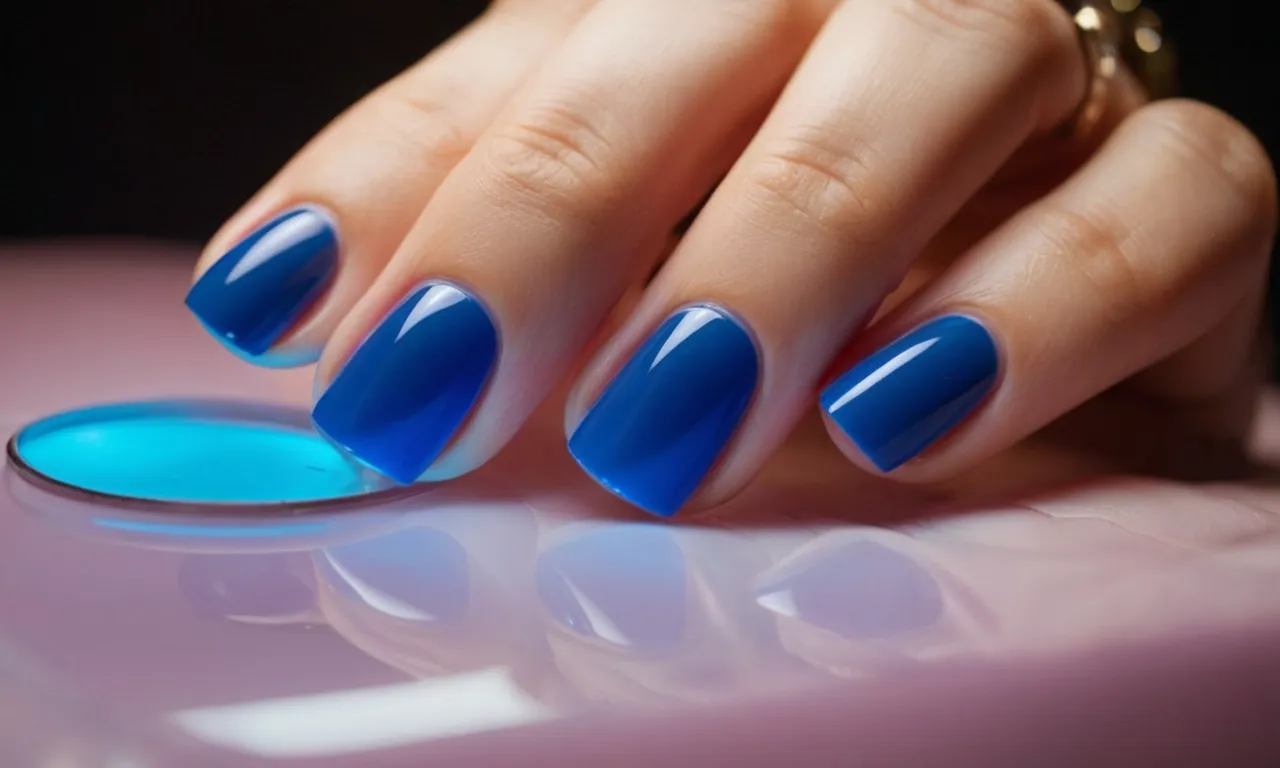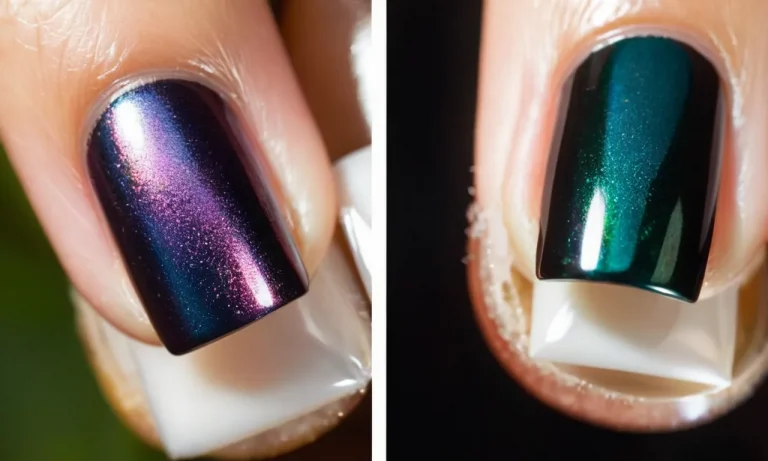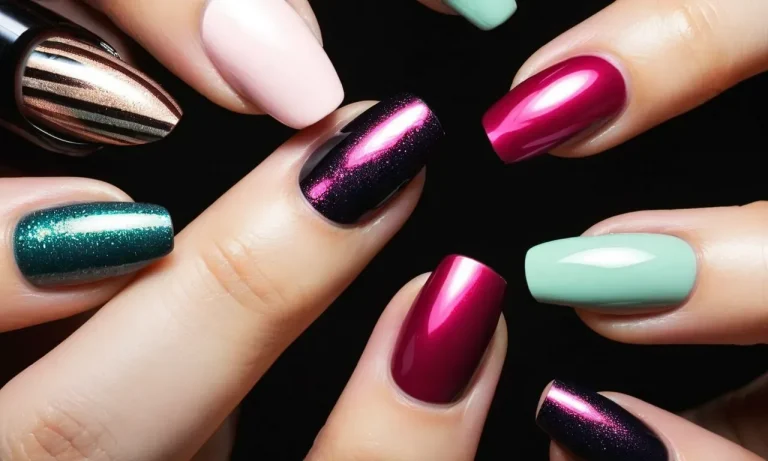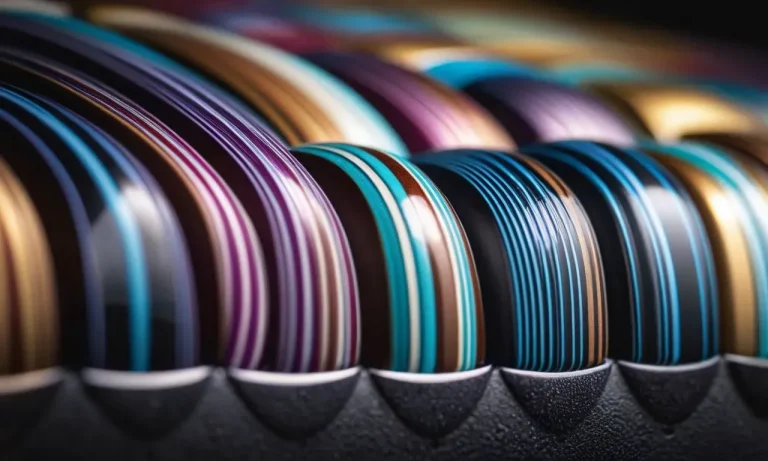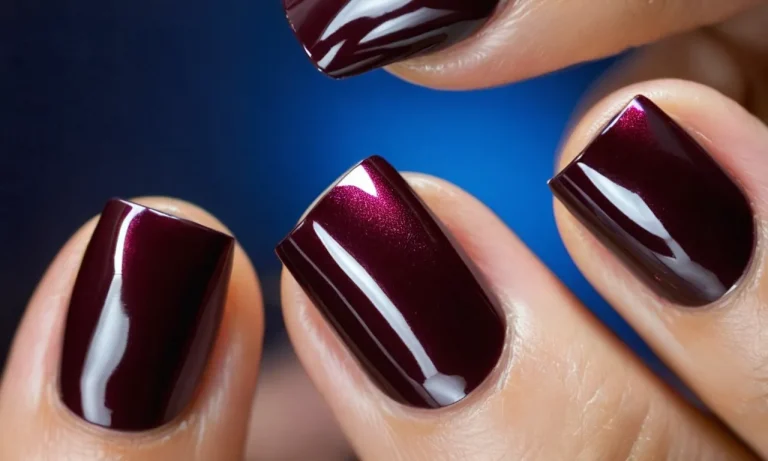How Long Should You Leave Gel Nails Under A Uv Lamp?
Got an appointment to get gorgeously glossy gel manicure but unsure about the curing time? With various gel polish brands advertising different timings, it’s easy to get confused. Read on as we elaborate how long you should keep your fingers under the UV lamp for a smooth, long-lasting manicure.
If you’re short on time, here’s a quick answer: You should cure your gel nails under UV light for 30 to 60 seconds per coat. Most brands and nail techs recommend exposing gel polish to UV light for 30 seconds per coat.
However, some creams and powders may require up to 60 seconds of curing time per layer.
In this comprehensive guide, we will cover everything about UV gel nail curing time including number of coats, factors affecting duration, overexposure risks, and tips for properly drying gel manicures.
Understanding Gel Nail Chemistry and Curing Process
How Does Gel Nail Polish Dry Under UV Light?
Gel nail polish contains unique ingredients that allow it to cure and harden under UV light. The key ingredient is the photoinitiator, which absorbs UV rays and initiates the chemical reaction that transforms the polish from a liquid to a solid.
Here’s how it works: First, the gel polish is painted onto the nails like regular polish. But instead of air drying, it is placed under a UV lamp. The lamps used in salons emit UV-A rays at a wavelength of 365 nm.
This UV light excites the photoinitiator molecules in the gel polish, causing them to fragment into free radicals. These highly reactive free radicals trigger polymerization – the molecules link together into long, chained polymers, forming a hard, glossy coating on the nails.
Most gel polishes require curing for 30 seconds to 2 minutes under UV lights to fully harden. The timing depends on factors like the brand and thickness of the gel coating. As the polymers form, the liquid gel becomes solid and tack-free. Voila – rock hard nails in minutes!
Role of Photoinitiators in Gel Nail Curing
Photoinitators are the “magic” ingredients that allow gel polishes to cure under UV light. Common photoinitiators used in gel nail systems include benzophenone, ethyl Michler’s ketone, and Oligo [2-hydroxy-2-methyl-1-[4-(1-methylvinyl)phenyl]propanone].
Each brand uses its own proprietary blend, but all contain these light-sensitive molecules. Without photoinitators, the polymerization process would not be triggered by UV rays, and the polish would never harden.
When UV light strikes the photoinitiator molecules, their chemical bonds break and release free radicals. The free radicals interact with carbon double bonds in the gel’s polymer molecules, opening them so they can link together.
More free radicals are continuously produced as the UV lamp shines on the nail. This propagates the polymerization throughout the entire gel polish layer, curing it fully. Photoinitators are essential players in transforming gel polish from a liquid to a durable solid.
Some key advantages of photoinitators in gel polish:
- Allow rapid hardening under UV light in minutes
- Initiate complete curing throughout the gel layer
- Create a glossy, chip-resistant manicure
- Low risk of damage or allergic reactions compared to peroxide
The development of photoinitiator technology enabled revolutionary UV-curable gel nail systems. It continues to drive innovations in gel polish formulas and nail art today.
Number of Coats and Curing Time for Gel Manicures
Recommended Coats of Gel Polish
When getting a gel manicure, most manicurists recommend applying 2-3 thin coats of gel polish. Here’s a breakdown of the common number of coats:
- 2 coats – This is the minimum number of coats needed for an opaque, glossy finish. Two coats allow the gel polish to fully cure.
- 3 coats – Three thin coats are commonly used to build up color for a flawless appearance. The third coat helps ensure even coverage and fill in any thin spots.
- 4 coats – While less common, some dark gel polish colors may require 4 coats to achieve desired opacity and depth of tone. The 4th coat maximizes color intensity.
No matter how many coats you use, it’s important that each layer is thin and evenly applied. Thick coats won’t cure properly under the LED or UV nail lamp. Going with 2-3 thin coats is the sweet spot for quick curing and a chip-resistant manicure.
Curing Time Per Layer of Gel
Each layer or coat of gel polish needs to be cured under the nail lamp before moving onto the next step. Here are the recommended cure times:
- Base coat gel: 30-60 seconds
- Color coats: 30-60 seconds per coat
- Top coat gel: 60-120 seconds
So for example, if doing a gel manicure with 2 coats of color plus base and top coat, the total curing time under the LED or UV lamp would be:
- Base coat gel: 30-60 seconds
- 1st color coat: 30-60 seconds
- 2nd color coat: 30-60 seconds
- Top coat gel: 60-120 seconds
That comes out to 2.5-5 minutes of curing time in total. Keep in mind that curing times can vary a bit based on the brand and thickness of the gel polish. Always refer to the product instructions for precise timing.
It’s crucial not to skip any curing steps when doing a gel manicure at home or in the salon. Properly curing each layer locks in the color and creates a hard, glossy finish that resists chipping and peeling. Rushing the curing may result in soft, sticky gels that don’t last.
With the right technique, gel manicures can last up to 2-3 weeks without chipping or losing shine! Take the time to apply thin coats and properly cure each layer under the UV or LED lamp for stunning, long-lasting nails.
Factors That Influence Gel Nail Drying Duration
Type and Brand of Gel Polish
The type and brand of gel polish used can impact the time needed under the UV lamp. Gel polish formulas vary in viscosity, opacity, and curing requirements set by the manufacturer. Thinner, sheer gel polishes tend to cure faster with less time under the light compared to thicker, opaque colors.
Additionally, salon-quality gel brands designed for professional use often recommend slightly longer cure times than drugstore gel polishes.
Wattage Power of UV Nail Lamp
Higher wattage UV lamps cure gel polish faster than lower wattage options. Most professional nail lamps range from 36w to 54w bulbs, while consumer lamps are often around 18w to 30w. With a lower wattage bulb, the recommended manufacturer cure time may need to be increased by 50-100% to properly set the gel.
| UV Lamp Wattage | Average Cure Time |
|---|---|
| 18-30 watts | 60-90 seconds |
| 36-54 watts | 30-45 seconds |
Applying Base Coat and Top Coat
Properly layering gel polish with a base coat underneath and top coat on top impacts cure time. Gel base coats prep the nail, while gel top coats help seal in color and provide extra shine. However, adding these steps means slightly longer time under the light to set each individual layer of product.
Most brands recommend an extra 10-15 seconds cure time per nail with base and top coat added.
Additionally, applying gel polish too thickly can increase cure times. Multiple thin coats with proper drying in between allows for even LED light penetration. Rushing this process by layering thick gel or not allowing proper flash drying can lead to tacky polish requiring more passes under the UV lamp.
Overexposure Risks and Tips
Potential Risks of Overexposing Gel Nails to UV
Overexposing gel nails to UV light can potentially lead to some risks that nail salon customers should be aware of. Here are some of the main concerns:
While occasional, brief overexposure may not cause noticeable harm in healthy people, repeated or lengthy overexposure raises the risks. Those with sensitive skin or medical conditions like lupus are especially vulnerable.
Tips to Properly Cure Gel Manicures
To get the right cure without going overboard on UV exposure, here are some tips:
Proper curing is key for durable gel manicures, but being mindful of exposure levels minimizes risks of skin, nail, and eye damage from overdoing UV rays. Work with your manicurist to get the perfect cure without going overboard.
Conclusion
We discussed the ideal curing time for gel nail polish and several factors affecting UV light exposure duration. While most quality gel brands take 30 to 60 seconds per layer to set completely, variables like product ingredients, lamp wattage and coats of polish can impact the timing.
Remember, regardless of the gel system you use, never over cure nails in UV light. Closely follow manufacturer’s instructions printed on the bottle. We also shared crucial tips to help properly dry your glossy manicure.

